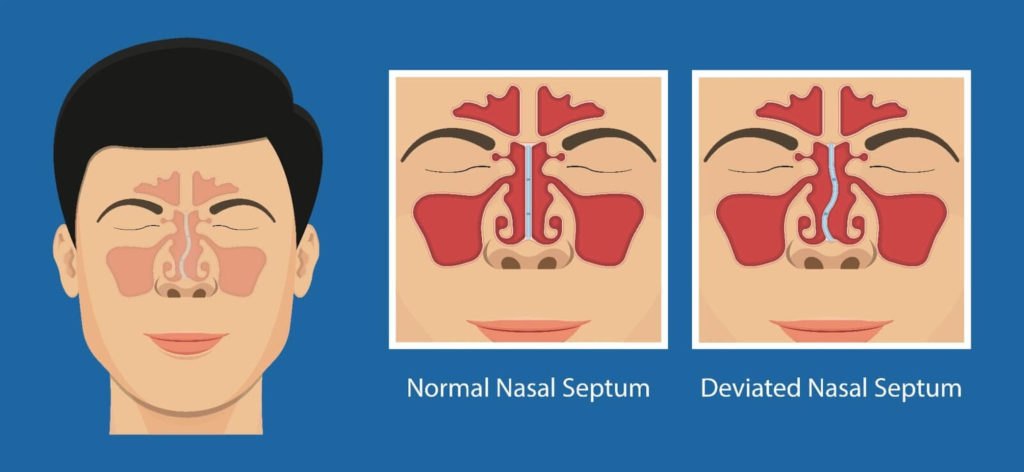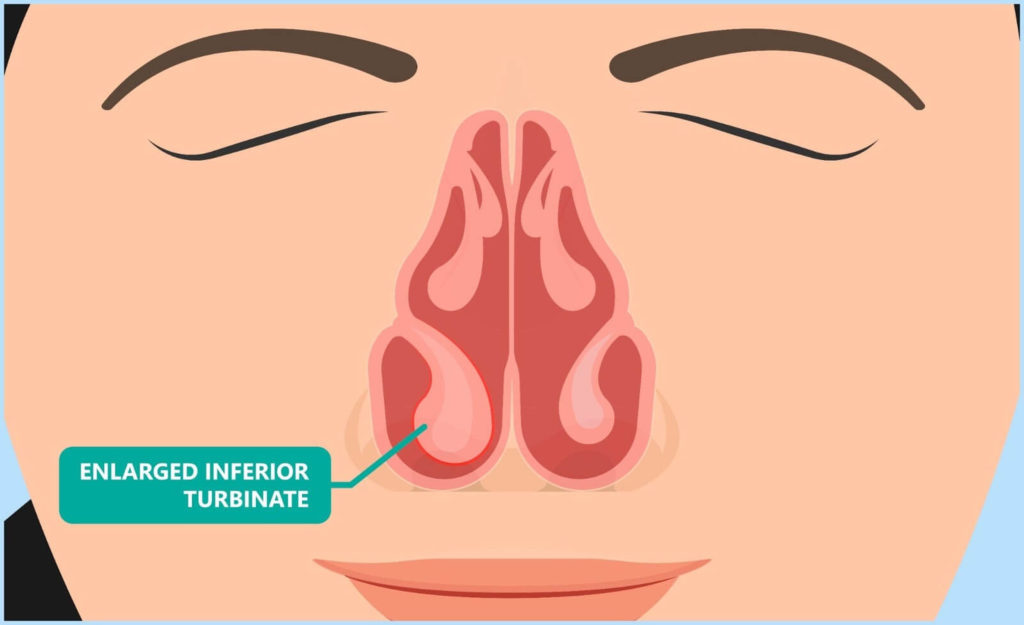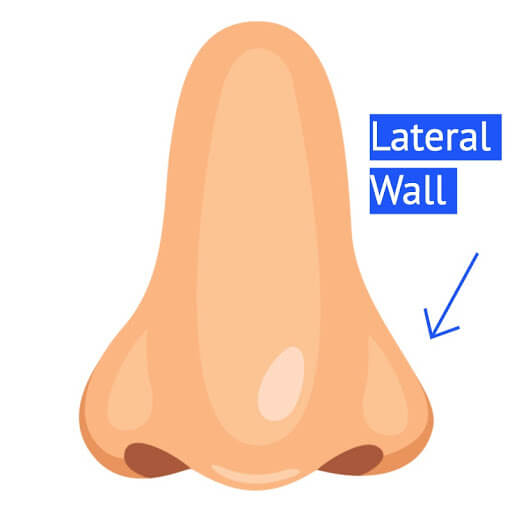The LATERA Implant for Nasal Obstruction Relief
The LATERA implant, a new technology from Stryker, may be able to help the nearly 20 million Americans1 who suffer from some form of nasal obstruction. The LATERA nasal implant can provide additional structural support to the cartilage in your lateral nasal walls, helping them stay open as you breathe in.
Dr. Kaplan is currently one of the few ENTs who offers LATERA implants in central Houston and the surrounding area. Read on to learn more about the LATERA implant and how this simple yet life-changing procedure is helping thousands of people breathe with more ease.
What causes nasal obstruction?
There are several common types of nasal obstruction that can make it difficult to breathe, all of which involve a different issue with the construction of your nose. If you struggle to breathe normally through your nose, you may be suffering from one or multiple types of nasal obstructions.
Deviated septum: The septum of your nose is the cartilage and bone that separates your two nasal passages. A deviated septum does not run in a straight line within your nose but juts out into one of your nasal passages.

Enlarged turbinates: Turbinates are natural structures that line the inside of your nose and help warm and humidify the air you breathe as it enters your body. Some individuals have enlarged turbinates, which can block airflow within your nasal passages.

Weak or flexible lateral wall: The lateral (side) wall of your nose is the outside part of your nostril. If the cartilage in your lateral walls is overly flexible or weak, the side walls may move inwards as you inhale, making it more difficult for you to breathe deeply through your nose.

Depending on the particulars of your nasal anatomy, there are several ways to treat nasal obstructions. Treatment-resistant cases of deviated septum or enlarged turbinates that cause sinus issues may need to be addressed via septoplasty or turbinate reduction, while mild cases can often be helped with minimally invasive balloon sinuplasty.
But what about nasal obstruction caused by weak or flexible nasal cartilage? That’s where the LATERA implant comes in.
Will the LATERA implant help improve my breathing?
LATERA can help patients who struggle to breathe due to nasal obstructions caused by weak or excessively flexible nasal cartilage in the lateral (side) walls of your nose. Some signs that you may have this issue include the regular use of nasal strips as you sleep as well as improvement in breathing with the application of the Cottle Test.
If you regularly experience the following nasal airway obstruction symptoms, consider calling Dr. Kaplan to discuss this procedure:
- Difficulty breathing through your nose in general
- Regularly feeling as though your nose is blocked or obstructed
- Breathing issues while sleeping
- Difficulty breathing through your nose during exercise
- Congestion, stuffiness
According to Stryker and a clinical study of 30 patients, patients of the LATERA procedure may see the following benefits with “no adverse changes in cosmetic appearance.”
- Less trouble breathing through the nose
- Reduced nasal blockage or obstruction
- Less trouble sleeping
- Improved ability to get enough air through the nose during exercise or exertion
- Reduced nasal congestion or stuffiness
These changes can constitute a significant quality of life improvement depending on the severity of your nasal obstruction.
How does the LATERA implant help relieve nasal obstruction?
The LATERA implant helps relieve nasal obstruction by providing extra structural support to the upper and lower cartilage of your nose’s lateral walls. The small, absorbable implant is inserted inside the nasal wall. This implant anchors the cartilage above the maxilla bone, preventing nasal valve collapse and allowing you to breathe freely through your nostrils.
For a quick overview of the procedure, please take a moment to watch Stryker’s LATERA implant video:
The LATERA implant will support the cartilage of your nose for 18 months as it is absorbed by your body. During that time, a fibrous capsule will form around the implant, providing even more stability. As the implant is absorbed, tissue in your nose will react and form in its place. Over time this tissue will slowly be replaced naturally by collagen, which helps provide lasting support.
FAQ: What is the LATERA implant made of?
The LATERA nasal implant is made of non-latex, medical-grade PPLA polymer that absorbs over time, similar to dissolvable sutures.
How long does the LATERA implant last?
The LATERA implant itself absorbs over a period of 18 months. During that time, patients have noted a reduction in symptoms with no negative cosmetic effects. However, even after the implant is absorbed, the body’s reaction to the implant as described above continues to improve structural support and reduce nasal airway obstruction over time.
FAQ: Are the results of the LATERA nasal implant permanent?
The LATERA procedure is still relatively new, and information regarding the longevity of the results is still being collected. However, Stryker has noted that “patients experienced a reduction in nasal obstruction symptoms of 57.7% at 2 years, as measured by the NOSE survey.”
To hear more about the short- and long-term effects of the LATERA implant, we encourage you to watch and read the LATERA implant reviews on Stryker’s site.
Get the LATERA implant at Kaplan Sinus Relief in Houston
If you suffer from nasal obstruction, The LATERA absorbable nasal implant can make a difference in every aspect of your life. Dr. Kaplan is proud to be one of the first ENT doctors in the Houston area to provide this helpful treatment to his patients in-office.
For more information about the LATERA implant and to discover whether you are a good LATERA implant candidate, reach out to Kaplan Sinus Relief to set up an appointment. Call us at 713-766-1818 or contact us online today!
Notes:
1. Value calculated based on 2014 US population estimate from US Census and World Bank data in conjunction with incidence numbers cited in: Stewart M, Ferguson BJ, Fromer L. Epidemiology and burden of nasal congestion. Intl J Gen Med. 2010;3:37-45.



